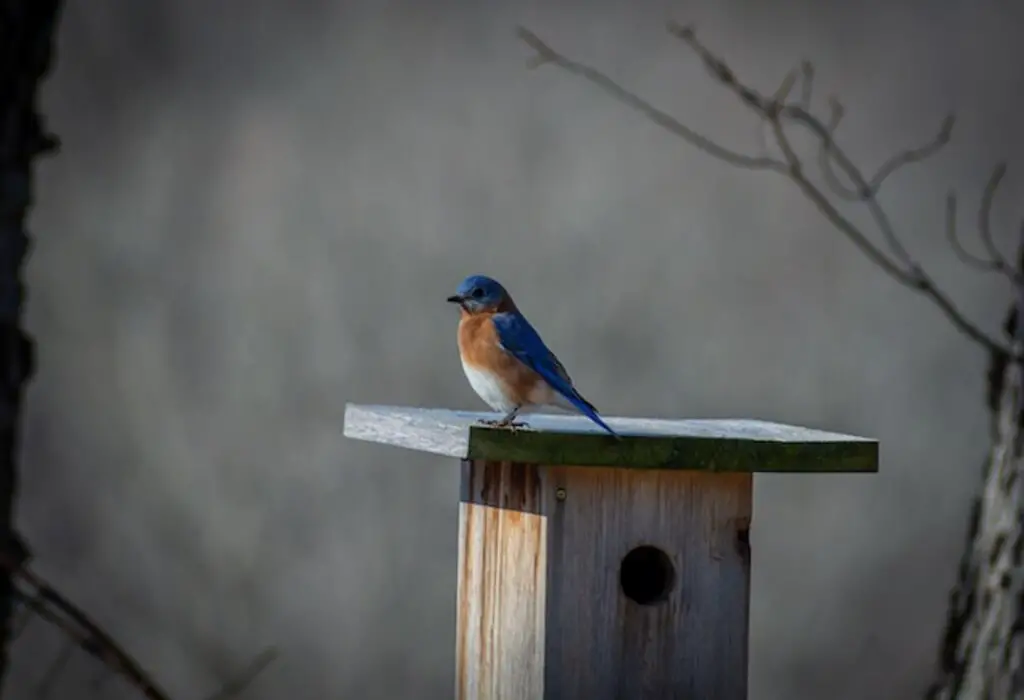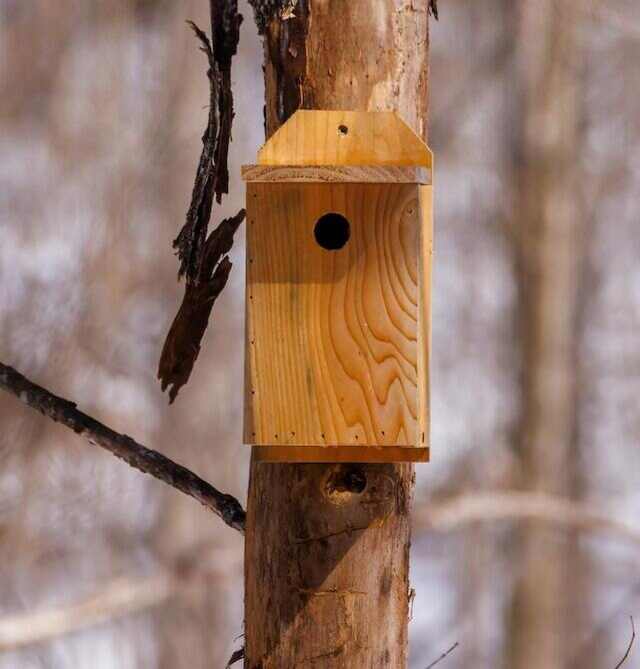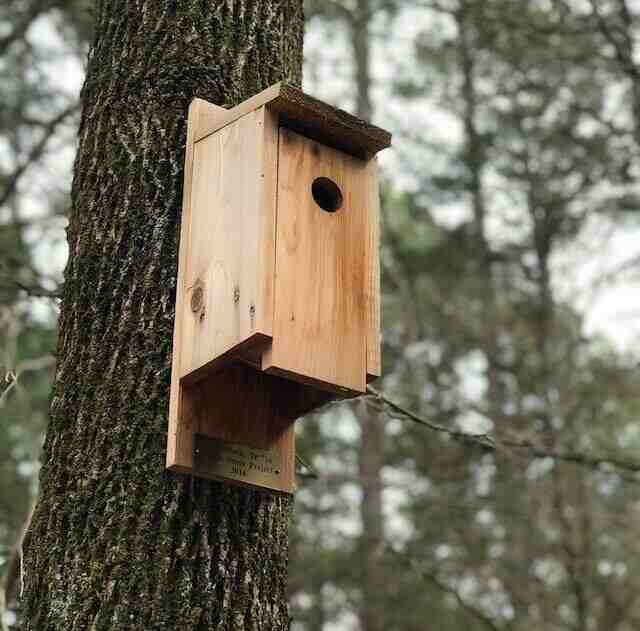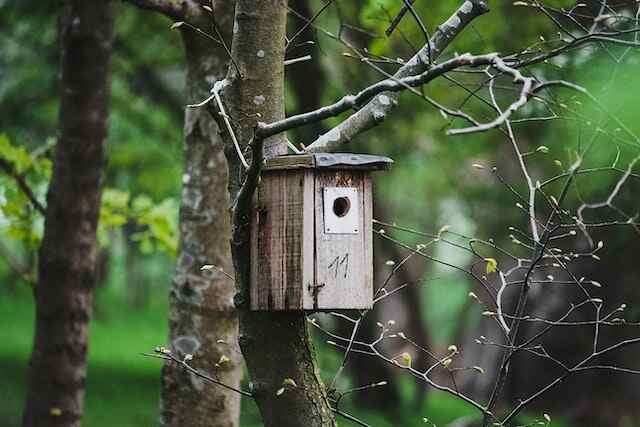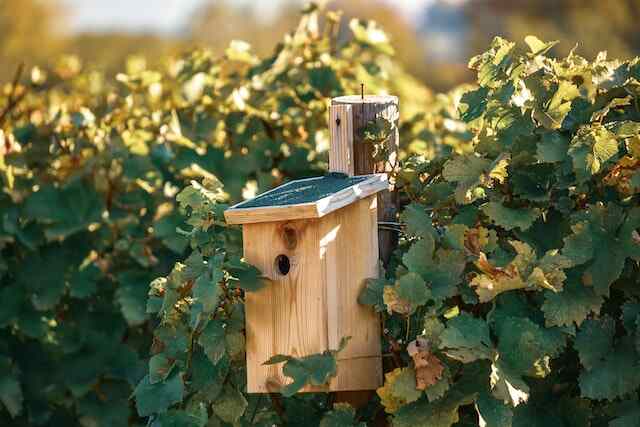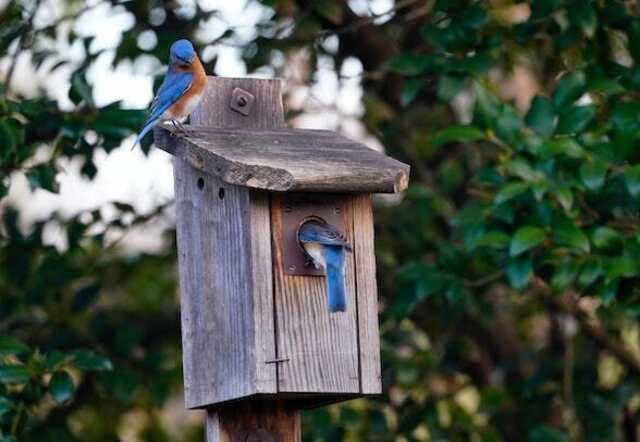Blue birds captivate nature enthusiasts with their vibrant plumage and sweet melodies. Providing suitable housing for these beloved avian creatures is crucial for their survival and well-being.
In this article, we explore the significance of blue bird housing and the factors to consider when creating a welcoming habitat.
Understanding their needs, selecting the right birdhouse, strategic placement, and providing nesting materials, food, and water are essential.
By supporting blue birds, we contribute to their conservation and enjoy the beauty they bring. Let’s delve into the world of blue bird housing and discover the joy it brings.
Table of Contents
- 1 Key Takeaways
- 2 The Importance of Blue Bird Housing
- 3 Understanding the Needs of Blue Birds
- 4 Choosing the Right Type of Birdhouse
- 5 Location and Placement of Birdhouses
- 6 Providing Nesting Materials
- 7 Creating a Safe and Predator-Proof Environment
- 8 Maintaining and Cleaning Birdhouses
- 9 Attracting Blue Birds with Food and Water
- 10 Monitoring and Observing Blue Bird Activity
- 11 Other Ways to Support Blue Birds in Your Yard
- 12 Celebrating the Beauty of Blue Birds
- 13 How to Make a DIY Bluebird House
- 14 Tips for Success:
- 15 Frequently Asked Questions
- 15.1 How do blue birds choose their nesting sites?
- 15.2 What materials should be avoided when building a blue bird house?
- 15.3 How can I prevent predators from accessing the blue bird house?
- 15.4 What are some common signs that blue birds are nesting in the birdhouse?
- 15.5 Are there any specific types of food or water that blue birds prefer?
- 16 Conclusion
- 17 Author
Key Takeaways
- Suitable housing is crucial for the survival and well-being of blue birds.
- Understanding blue bird behavior and habitat preferences is important for designing appropriate birdhouses.
- Selecting the right type of birdhouse and placing it strategically is crucial for attracting blue birds and encouraging nesting.
- Providing essential nesting materials and supplementary food and water sources enhances the appeal of birdhouses.
The Importance of Blue Bird Housing
Blue bird housing plays a crucial role in supporting the conservation efforts of blue bird populations by providing them with suitable nesting sites, thereby promoting their breeding success and overall population stability.
Understanding blue bird behavior is essential in designing appropriate housing structures. Blue birds prefer nesting in cavities, such as natural tree hollows or man-made nest boxes.
The availability of suitable nesting sites is often limited in natural habitats, due to competition with other bird species and habitat loss.
By providing blue birds with artificial nesting structures, such as nest boxes, conservationists can help increase their breeding success.
These nest boxes mimic natural cavities and offer safe and secure places for blue birds to raise their young.
Promoting blue bird conservation through the provision of suitable housing is a proactive approach to support their population stability.
Understanding the needs of blue birds is crucial in effectively designing and implementing successful conservation strategies.
Understanding the Needs of Blue Birds
Nesting preferences and environmental requirements are crucial factors to consider when addressing the needs of blue birds.
Blue birds exhibit specific behaviors and have unique migration patterns that influence their housing needs. Understanding these needs is essential for creating suitable habitats for these birds.
Blue birds are cavity nesters, meaning they prefer to nest in pre-existing cavities such as tree holes or birdhouses.
They also exhibit territorial behavior and require ample space between nesting sites to reduce competition.
Additionally, blue birds are migratory, with different populations migrating to various regions during different times of the year.
Therefore, providing suitable housing that meets their needs during both breeding and migration seasons is vital.
By understanding blue bird behavior and migration patterns, we can ensure that the birdhouses we choose are appropriate and beneficial for these beautiful birds.
Choosing the Right Type of Birdhouse
When considering the needs of cavity-nesting birds, it is important to carefully select a suitable type of habitat that caters to their unique preferences and behaviors.
Birdhouse designs play a crucial role in attracting different species.
For example, blue birds prefer birdhouses with a round entrance hole of about 1.5 inches in diameter, while other species might prefer larger or smaller holes.
It is also important to consider the depth of the birdhouse, as blue birds prefer shallow cavities.
Additionally, the type of material used for the birdhouse can impact its attractiveness to different species.
For instance, some birds prefer wooden birdhouses, while others may be more attracted to those made of natural gourds or PVC pipes.
By selecting the right type of birdhouse design, bird enthusiasts can increase the likelihood of attracting their desired species.
Moving on to the next section, the location and placement of birdhouses…
Location and Placement of Birdhouses
Optimal placement of birdhouses requires careful consideration of factors such as height, proximity to vegetation, and orientation to provide a safe and inviting habitat for cavity-nesting species.
When selecting a location for the birdhouse, it is important to choose an area that is free from disturbances and predators, such as cats or squirrels.
Placing the birdhouse at a height of 5–15 feet off the ground can help protect the inhabitants from ground predators.
Additionally, proximity to vegetation is crucial as it provides cover and foraging opportunities for birds.
Orienting the birdhouse away from prevailing winds and direct sunlight can also help regulate temperature inside the nest.
By strategically considering these factors, bird enthusiasts can create an optimal environment for cavity-nesting birds to thrive.
Providing nesting materials, such as twigs and leaves, is the next step in creating a suitable habitat for these avian residents.
Providing Nesting Materials
Providing suitable materials for construction of nests is an essential aspect of creating an environment conducive to the nesting behavior of cavity-nesting bird species.
By providing nesting materials, such as twigs, grasses, leaves, and feathers, bird enthusiasts can attract nesting pairs to their blue bird houses.
First, twigs can be collected and piled near the birdhouse to mimic a natural nesting site.
Second, grasses can be scattered around the entrance hole, creating a soft and cozy lining for the nest.
Third, leaves can be placed near the birdhouse, allowing the birds to incorporate them into their nest structure.
Lastly, feathers can be placed in a nearby area, providing insulation and warmth for the eggs and hatchlings.
By incorporating these materials, individuals can create an inviting habitat for nesting pairs.
Transitioning to the next section, creating a safe and predator-proof environment is crucial for the success of blue bird housing.
Creating a Safe and Predator-Proof Environment
To ensure the success of blue bird housing, it is crucial to create a safe and predator-proof environment.
Blue birds are vulnerable to various predators, including snakes, raccoons, and cats. To protect them, it is essential to choose the right location for the birdhouse, such as a secluded area away from potential threats.
Additionally, installing a predator guard around the entrance hole can further deter predators from accessing the nest.
Creating a backyard sanctuary with dense vegetation and shrubs can provide additional protection and hiding places for blue birds.
Moreover, regular monitoring of the birdhouse and surrounding area is necessary to identify and address any potential risks.
By taking these measures, blue bird enthusiasts can prevent birdhouse damage and ensure the safety of these beautiful creatures.
Moving forward, maintaining and cleaning birdhouses is paramount for their long-term success and well-being.
Maintaining and Cleaning Birdhouses
Regular maintenance and cleaning of birdhouses is akin to tending a garden, ensuring a hospitable environment for the feathered inhabitants to thrive in.
Cleaning techniques are essential to prevent the buildup of harmful bacteria and parasites that can threaten the health of the birds. Here are some effective cleaning techniques for maintaining birdhouses:
- Remove and discard any old nesting material.
- Scrub the interior surfaces with a brush and mild detergent, ensuring to rinse thoroughly.
- Disinfect the birdhouse by applying a non-toxic disinfectant solution.
- Allow the birdhouse to dry completely before reassembling it.
- Regularly inspect the birdhouse for signs of wear and damage, repairing or replacing as necessary.
By following these cleaning techniques, birdhouses can provide a safe and clean environment for blue birds and other feathered friends.
Transitioning to the subsequent section, attracting blue birds with food and water, further enhances the appeal of these birdhouses.
Attracting Blue Birds with Food and Water
Enhancing the allure of these avian habitats, the provision of nourishment and hydration can effectively entice and support the presence of blue birds.
To attract blue birds, it is important to provide a variety of food sources and a reliable supply of water. Blue birds have a diverse diet consisting of insects, fruits, and berries.
Placing mealworms, suet, and fruit in a feeder can attract these birds. Additionally, planting native trees and shrubs that produce fruits and berries can provide natural food sources.
A clean and reliable water source is also essential. A shallow birdbath or a small pond with a gentle water movement can attract blue birds.
To ensure the safety of the birds, avoid using pesticides and keep the feeding and watering areas clean.
Providing food and water in a blue bird-friendly environment will increase the likelihood of attracting these beautiful creatures.
Transitioning into the next section about monitoring and observing blue bird activity, it is important to note that by implementing these strategies, one can gain valuable insights into the behavior and habits of blue birds.
Monitoring and Observing Blue Bird Activity
By closely observing and documenting the behavioral patterns of these avian inhabitants, researchers can gain valuable insights into the daily lives and interactions of these captivating creatures.
Bird watching is a popular activity among enthusiasts who are fascinated by the diverse behaviors of different bird species.
When it comes to blue birds, careful observation can provide important information about their feeding habits, mating rituals, territorial behaviors, and interactions with other birds.
By spending time in their natural habitat and documenting their activities, researchers can discover how blue birds communicate, establish hierarchies, and adapt to changes in their environment.
This knowledge can help conservationists develop strategies to protect blue bird populations and create suitable habitats for them.
Understanding bird behavior is crucial for ensuring the well-being and survival of these beautiful creatures in our yards and beyond.
To support blue birds in your yard, there are other ways to create an environment that attracts and sustains them.
Other Ways to Support Blue Birds in Your Yard
Creating a diverse and abundant landscape with a variety of native plants and trees can provide the necessary food sources and shelter for blue birds in your yard.
By attracting butterflies to your yard, you can create a wildlife habitat that blue birds will find attractive. Butterflies are important pollinators and their presence in the yard can help sustain the ecosystem.
Planting native flowering plants that provide nectar for butterflies, such as milkweed and butterfly bush, can attract these colorful insects and in turn, attract blue birds.
Additionally, incorporating bird feeders and bird baths can provide a consistent food and water source for blue birds.
These measures can help support blue bird populations and contribute to the overall health and beauty of your yard.
Transitioning to the next section, celebrating the beauty of blue birds, we can explore the aesthetic appeal they bring to any landscape.
Celebrating the Beauty of Blue Birds
The graceful presence and vibrant plumage of blue birds lend an enchanting allure to any landscape, captivating viewers with their stunning colors and elegant flight.
The beauty of blue feathers is truly remarkable, as they shimmer and reflect light, creating a mesmerizing display.
Blue birds are known for their migratory patterns, with some species traveling thousands of miles each year.
Understanding these migration patterns is crucial for their conservation and protection. Here are four fascinating facts about blue bird migration:
- Long-distance travelers: Blue birds, such as the Eastern Bluebird, embark on long journeys, flying from their breeding grounds in North America to their wintering grounds in Central America or southern United States.
- Navigation skills: Blue birds rely on a combination of celestial cues, magnetic fields, and landmarks to navigate during migration. They possess an innate ability to recognize and follow specific routes.
- Timing is crucial: Blue birds time their migrations based on factors like food availability and weather conditions. They often adjust their departure dates to ensure a successful journey.
- Critical stopover sites: Blue birds rely on specific stopover sites along their migration routes to rest and refuel. These sites provide essential resources, such as food and shelter, before they continue their journey.
The beauty of blue birds and their migration patterns highlight the incredible adaptability and resilience of these avian wonders.
How to Make a DIY Bluebird House
Creating a DIY bluebird house is a rewarding and fulfilling project that can provide a safe haven for these beloved avian creatures.
In this guide, we will cover everything you need to know, from the tools required to the best wood types, step-by-step plans, and essential tips to ensure a successful build.
Let’s get started on creating a welcoming home for bluebirds in your backyard!
Tools Needed: Before you begin, gather the following tools:
- Tape measure
- Saw (hand saw or circular saw)
- Drill
- Drill bits (pilot bit and hole saw bit)
- Screwdriver
- Sandpaper (medium and fine grit)
- Clamps
- Safety goggles
- Work gloves
Choosing the Right Wood: Selecting the right wood is crucial for the durability and safety of the bluebird house. Consider using untreated cedar, cypress, or pine lumber.
These types of wood are resistant to rot and insects and provide a natural aesthetic. Avoid using pressure-treated wood as it contains chemicals that can harm the birds.
Step-by-Step Plans:
- Plan and Measure:
- Determine the dimensions of the bluebird house. Recommended dimensions are approximately 5 inches wide, 5 inches deep, and 8-12 inches tall.
- Sketch a plan, including the front, back, sides, bottom, and roof.
- Measure and mark the wood according to the plan.
- Cut the Wood:
- Use a saw to cut the pieces according to the measurements.
- Ensure clean and straight cuts.
- Create the Entrance Hole:
- Mark the desired entrance hole location on the front piece.
- Use a pilot bit to drill a small hole at the center of the marked location.
- Use a hole saw bit of the appropriate diameter to create the entrance hole.
- Assemble the Bluebird House:
- Attach the sides to the back piece using screws or nails.
- Attach the bottom piece to the sides and back, ensuring a secure fit.
- Attach the front piece with the entrance hole to complete the structure.
- Use clamps to hold the pieces in place during assembly.
- Add Roof and Ventilation:
- Attach the roof piece to the top of the bluebird house, ensuring proper overhang.
- Create ventilation by drilling small holes near the top of the sides or adding a small vent on the roof.
- Sand and Finish:
- Smooth any rough edges or surfaces using medium and fine grit sandpaper.
- Remove splinters and ensure a safe environment for the birds.
- Mounting the Bluebird House:
- Choose a suitable location for mounting, preferably on a post or pole.
- Ensure the entrance hole faces away from prevailing winds and potential predators.
- Use screws or brackets to securely attach the bluebird house to the mounting structure.
Tips for Success:
- Place predator guards, such as metal baffles, below the house to prevent climbing.
- Clean the bluebird house annually, preferably in late winter or early spring, by removing old nesting materials.
- Monitor the house regularly for any signs of damage, wear, or intrusion.
- Provide nearby food sources, such as mealworms, fruits, and berries, to attract bluebirds.
- Avoid placing the bluebird house too close to bird feeders to minimize competition.
By following these step-by-step plans and essential tips, you can create a DIY bluebird house that provides a safe and welcoming habitat for these beautiful birds.
Enjoy the satisfaction of attracting and nurturing bluebirds in your own backyard while contributing to their conservation.
Frequently Asked Questions
How do blue birds choose their nesting sites?
Blue birds choose their nesting sites based on various factors such as the availability of food and water sources, predator protection, and suitable nesting materials. They often migrate to areas with favorable conditions and adapt their nesting behaviors accordingly, including using blue bird nest boxes for placement.
What materials should be avoided when building a blue bird house?
When constructing a blue bird house, it is important to avoid materials such as metal, glass, and treated wood, as they can be harmful to the birds. Best practices include using natural, untreated wood and providing proper ventilation and drainage.
How can I prevent predators from accessing the blue bird house?
To deter predators and secure a birdhouse, various measures can be taken. These include installing predator guards on poles or trees, using baffles to prevent climbing, placing the birdhouse in open areas away from cover, and employing nestbox designs that minimize access for predators.
What are some common signs that blue birds are nesting in the birdhouse?
Some common signs of blue bird nesting include the presence of nesting materials like grass and twigs, frequent visits to the birdhouse, and the sound of chirping. To attract blue birds, provide shelter, food, and water in your yard.
Are there any specific types of food or water that blue birds prefer?
Blue birds prefer a diet that consists of insects, fruits, and berries. To attract blue birds, provide mealworms, suet, and a water source such as a shallow birdbath. These food options are known to be appealing to blue birds.
Conclusion
In conclusion, the provision of suitable blue bird housing is pivotal for the conservation and well-being of these captivating creatures.
By understanding their specific requirements, selecting the appropriate birdhouse design, and strategically placing it in an optimal location, we can create a welcoming habitat for blue birds.
Additionally, offering nesting materials, food, and water further enhances their chances of survival and breeding success.
Regular monitoring and observation allow for valuable insights into their behavior and population trends.
By taking these measures, we can actively contribute to the preservation of blue birds in our yards.
As the saying goes, ‘A blue bird in flight is a symbol of beauty and freedom,’ and it is our responsibility to ensure their continued existence.

